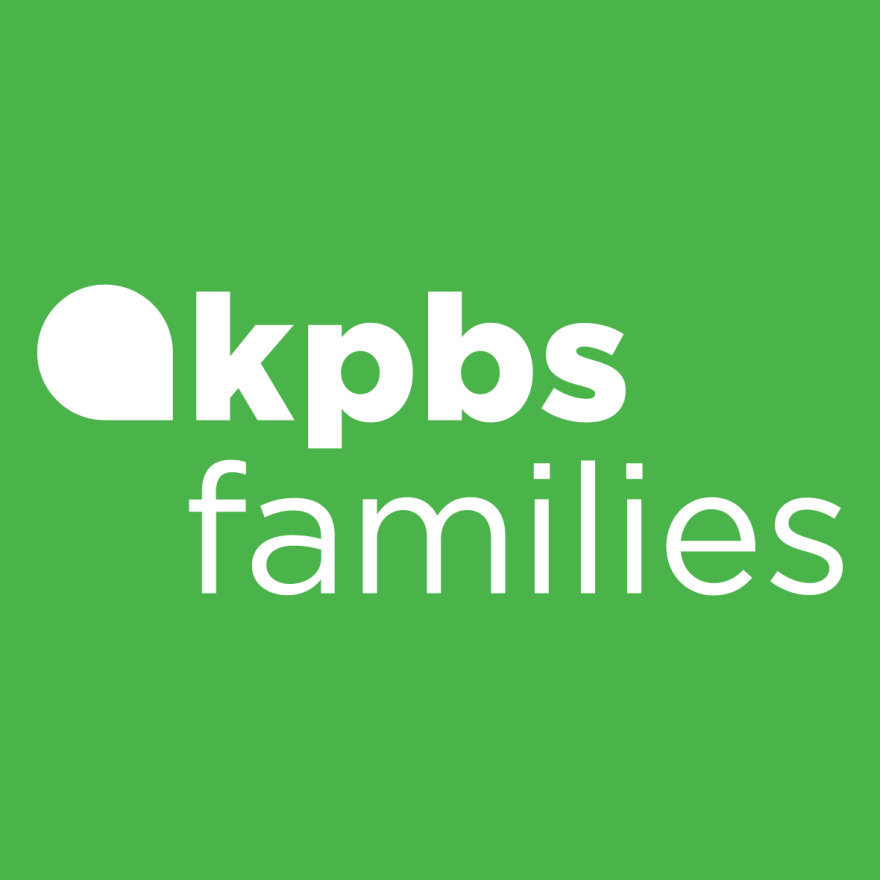Setting and achieving goals helps kids (and grown-ups) build self-esteem — and teaches perseverance, too.
When children set goals, it helps them practice executive function skills like planning. Children use these skills in school and life as they learn new, more complex concepts.
Practice setting a goal with your child like Donkey Hodie and Purple Panda do in “The Goalies.” In the episode, Donkey and Panda become “goalies” as they set and achieve goals throughout the day.
3 easy steps for goal-setting with kids
- First, start by defining the word goal for your child. Explain that a goal is something you want to do. Talk about how you have to try hard, plan, and practice to reach a goal.
- Next, give an example of a goal. Maybe your child wants to learn how to balance on one foot or share their toys with a sibling. In “The Goalies,” Donkey tried to balance a pineapple while walking, and Panda wanted to clean up his toys. While it wasn’t easy, they both kept on trying!
- Another approach for helping your child learn is to set a family goal. Begin by describing a problem that needs to be solved and ways you could help one another achieve that goal. For example, if your family feels rushed in the morning, set a goal that everyone will organize their jackets, backpacks, or other items the night before instead of in the morning.
3 tips for setting a great goal with your child — draw it, plan it, do it!
Breaking down a goal in three steps makes it easier!
- Draw it or write it down.
- Make a plan to achieve it by breaking it into steps.
- Do it! Talk with your child about some common ways that adults and children practice goal-setting, like completing each step of a recipe when cooking, figuring out how to go through an obstacle course step-by-step, or getting ready for the day or bedtime by following step-by-step routines.
Add some musical fun while helping your child plan a goal by singing Donkey and Panda’s song:
Let’s think of steps before we start,
And complete them, part by part.
We’ve gotta keep with them,
Work and believe in,
Our goals then we’ll reach ‘em,
Even when they’re hard!
Try this hands-on paper chain activity to help children visualize breaking a goal into steps:
Describe to your child how they will make a paper goal chain. Prepare your construction paper by folding it into three or four sections lengthwise and cutting it into strips or cutting along the lines of the Donkey Hodie goal rings template. You’ll need about three strips.
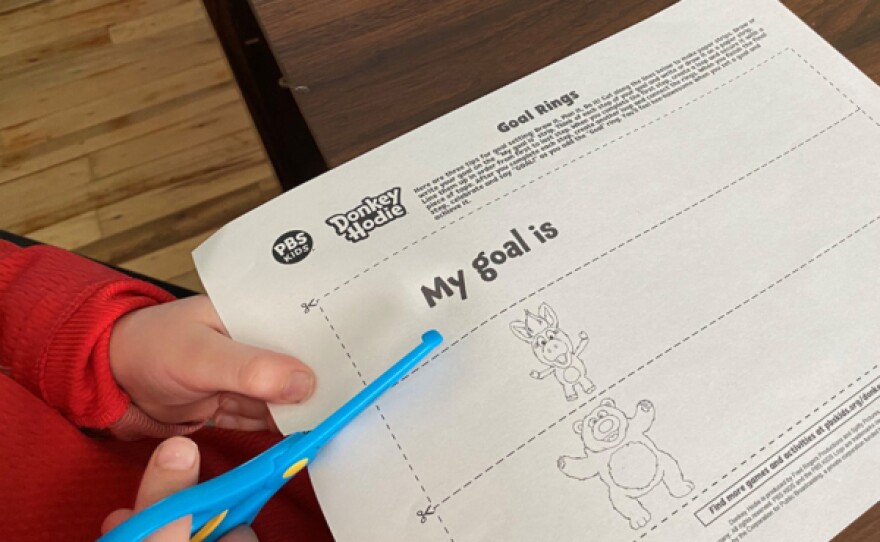
Discuss with your child what goal they would like to achieve. They should draw or write their goal on a paper strip. (Younger children may need help writing, or they can draw each step on individual paper strips.)
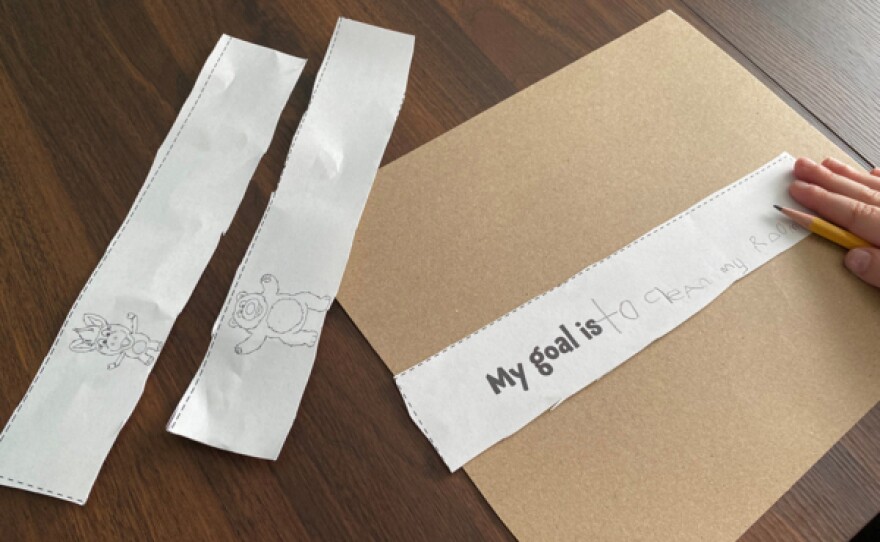
Next, talk together about how to break the goal into simple steps. Write or draw each step on a paper strip.
Line up the paper strips in order from the first step to the last step.
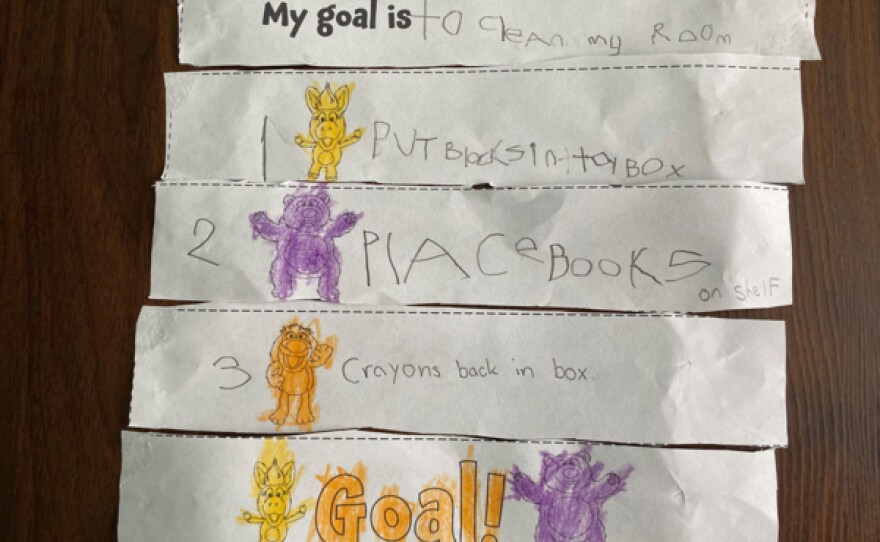
Explain to your child that after completing the first step, they will create a loop and secure it using tape. When they complete the next step, they will create another loop and connect the rings to make a chain.
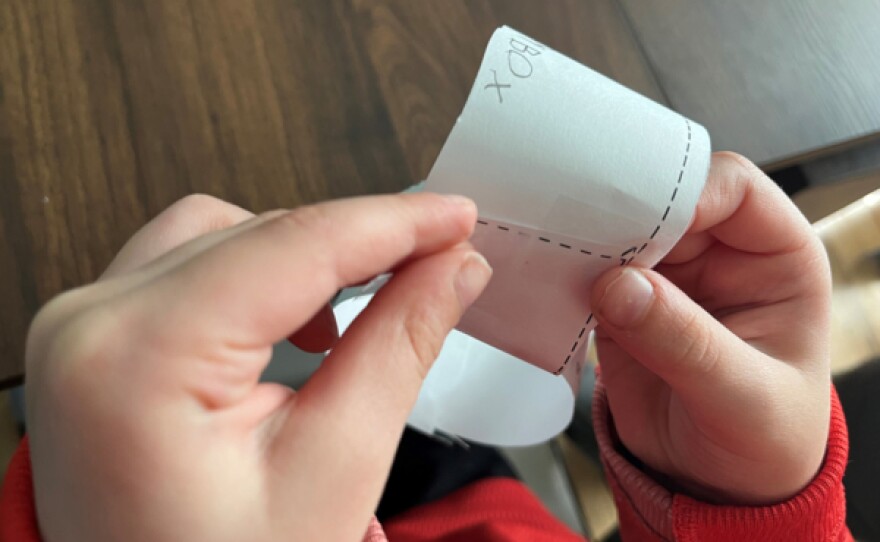
After your child accomplishes their goal, remind them to celebrate and say “GOAL!” Together, you can look back at the paper ring chain and talk about all the steps they followed to reach their goal!
Achieving a goal can be hard work. Sometimes it doesn’t go as planned. When your child needs extra encouragement, you can share this hee-hawesome reminder from Donkey Hodie:
"Take a deep breath, stay focused, think smart. When a problem’s really hard, be strong, take heart!
You may also need to remind children that it takes time to achieve a goal, and often, it’s not done in one hour or even in one day!
Achieving goals takes practice, but step by step, your child will learn how to accomplish new goals and feel so proud of themselves when they do!



